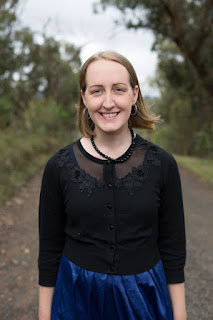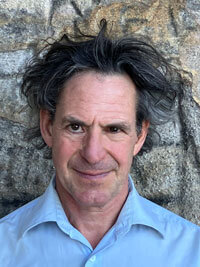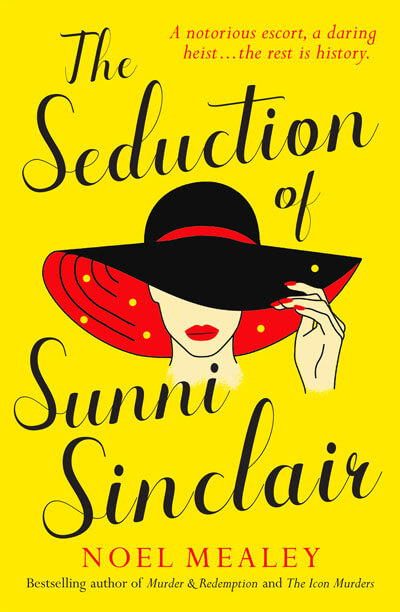Robert Cox

Tasmanian author Robert Cox writes mainly in two genres: history and short fiction. Originally considering himself a journeyman, a writer by trade, he has had stints as advertising copywriter, public relations consultant, government communications manager, book reviewer, magazine journalist and editor, and newspaper reporter and subeditor. During a five-year spell as a freelancer, he wrote anything and everything from documentary film scripts to verses for greeting cards.
His real interests, however, were more literary, and through all those incarnations he continued to write and publish short stories, poetry, feature articles, and essays, producing work that has been commended in national short story competitions and several times anthologised. He has been the recipient of an Arts Tasmania literary grant.
No longer a jobbing hack, he now writes full time. A Compulsion to Kill is his sixth book, and he is co-editing reminiscences of the celebrated Tasmanian poet Gwen Harwood as Behind the Masks: Gwen Harwood Remembered by her Friends (Ginninderra Press). His other current project is a biography of the seminal Tasmanian resistance fighter Kikatapula, whom he calls ‘perhaps Australia’s most influential indigenous warrior of the colonial period’.
Robert Cox lives an eremitic life in a rural valley in southern Tasmania.
Sample
from First Blood: John Brown and Richard Lemon
Neither man could ever have entertained the faintest expectation that he would make history. They were just a couple of petty criminals, one in Ireland, the other in England, who were individually apprehended, tried, and transported to New South Wales and later to Tasmania, where each absconded, eventually to join forces. But despite their unprepossessing beginnings, John Brown and Richard Lemon went on to achieve a unique place in Australian history.
They became the country’s first recorded serial killers.
The full extent of their depredations more than two centuries ago and the actual number of their victims will never be certain. Although they were originally sent to New South Wales, the crimes ensuring their sanguinary place in history were committed later, in Tasmania between October 1807 and March 1808. At that time there was no newspaper in either of the island colony’s two tiny settlements and official records were scantily kept, if kept at all. There is no Tasmanian convict conduct record for either man and not much readily identifiable New South Wales record. The motives for their murders are unknown but inferable, yet the day-to-day details of their brief and bloody rampage are lost in time.
John Brown’s name is too common to make him easy to identify among the convicts in Sydney, the mother colony, in the early years of the nineteenth century. There were at least two Irish prisoners of that name in the Sydney area (as well as a Scottish-born John Brown who was tried and sentenced in Ireland) and two others (who might in fact have been the same men) who used John Brown as an alias. One John Brown was sentenced to death there in 1803 for stealing wheat, although it is uncertain whether the sentence was carried out or commuted. Another—or the same—John Brown was flogged in March 1804 for being absent from government labour for several weeks without leave.
Nevertheless, two likely candidates suggest themselves in New South Wales convict records:
• John Brown, tried Limerick 1800, arrived per Atlas 1802
• John Brown, tried Londonderry 1801, arrived per Hercules 1801
Since it is known that the Tasmanian serial killer spoke Irish, the John Brown tried at Limerick, in Gaelic-speaking western Ireland, is more likely to have been the man who was soon to join Richard Lemon in leaving indelible bloodstains on Australian history.
Brown was not to stay in Sydney. In February 1804 the first British settlement in northern Tasmania, known as Port Dalrymple, was established in the Tamar Valley under the command of Lieutenant-Governor William Paterson. Convict labour was essential for the settlement’s establishment and growth, and Brown was among those embarked in chains in the Buffalo at Sydney on 14 October 1804. The ship reached the Tamar about three weeks later, on 3 November. Brown was immediately assigned as a labourer to one of the settlers struggling to establish farms there.
The fact that his being sent to Port Dalrymple was only seven months after a John Brown was flogged in Sydney for absconding suggests they might have been the same man, for the new arrival absconded from the Tamar in March-April 1806, some sixteen months after arriving, with another prisoner whose name is unrecorded.
In a letter to London dated 25 August 1807, Paterson wrote that ‘Not less than ten prisoners have absconded with their Masters’ Dogs, fire-arms, etc., and are living in the woods and Mountains … It is but a few days since … two … runaways (who have been absent for sixteen Months) seized on two of the Soldiers who were collecting firewood, tied, and carried them to their Post, robbed them of everything, their arms and ammunition, and effected their escape.’ John Brown was one of the ten; he was probably also one of the two ‘absent for sixteen months’. His precise movements during the eighteen months between his absconding and his teaming up with Lemon are unknowable. He certainly joined a group of other absconders and they kept on the move.
The New South Wales Governor, William Bligh, in a letter to Hobart’s Lieutenant-Governor David Collins dated 1 October 1807, specifically referred to prisoners deserting from the Tamar settlement to the Derwent settlement at Hobart, so it seems the runaways kept moving between the two settlements via the east coast. Brown would use knowledge gained that way when he joined forces with Richard Lemon.
























IP (Interactive Publications Pty Ltd)
Robert Cox’s latest work A Compulsion to Kill: The Surprising Story of Australia’s Earliest Serial Killers is as disturbing as the title suggests.
This book by the acclaimed historical author, pictured right, focuses on the early years of white settlement in Tasmania (Van Dieman’s Land) and a chapter is dedicated to each of the worst killers of those years, including the notorious cannibal convict Alexander Pearce and the methodically brutal and often overlooked Charles Routley, who encouraged his victims to pray before he ended their lives. It traverses cold-blooded murder, rape, cannibalism and other physical degradations. While we now live in a society inured to violence, the content in this book is still graphic and shocking. It is also an excellent sociological account of Tasmania in those days.
Cox defines the difference between serial killers (more than one murder over a greater time span) and multiple murders (more than one murder, perpetrated at the same time), and the book begins looking at John Brown and Richard Lemon. They were transported to Sydney and then separately made their way to Van Dieman’s Land. It was here that their violent actions began – the murders that now have them recognized as Australia’s first serial killers.
The names Lemon and Brown, Thomas Jeffrey and John Haley are not as familiar as Rocky Whelan (whose hide-out cave near Hobart still bears his name) and, of course, Pearce. Cox’s descriptions of the violent actions of these men is unambiguous in condemning them, but in the case of Pearce it is more ambiguous, at least during his first spate of cannibalism. It was suggested by one of Pearce’s companions, a sailor, that the rule of the sea dictates that the weakest man be sacrificed for the good of the group. This provided justification for the first act of cannibalism by Pearce and his group. These men had escaped from the grimmest of penal settlements, Macquarie Harbour, and tried to make their way overland to settlement. They were far from alone in turning to the flesh of their companions to help them survive. Many of the killers discussed in this book also partake.
Each of these chapters provides a macabre and fascinating insight into the daily lives of people in early white settlement Tasmania and many also provide insight into the killers’ minds. The facts related by Cox build up a rich and bloody portrait. Charles Routley, who perpetrated most of his murders around Pitt Watter, was also harboured by locals. Whelan was a peaceful, stoic prisoner for more than 20 years, riding out excessive violence on Norfolk Island before finding his way to Van Dieman’s Land where he began a spree of murders. The context is as crucial to this book as the crimes.
While some readers may find his tight focus on the deaths of and by only white people limiting, this book, for all its grim subject matter, condenses the worst and first spates of murders and murderers into a grotesque but fascinating read.
The primary goal is to cover the atrocities perpetrated by these men but the greater historical and political context that Cox’s style and research offer highlights the brutal conditions in which these men lived.
– Rachel Edwards, Between the Lines, Tas Weekend
IP (Interactive Publications Pty Ltd)
“Meticulously researched, A Compulsion to Kill not only captures the horror of what was perpetuated by Tasmanian’s serial killers but also conjures a sense of Tasmania’s bloody past that is both historically informative and emotionally memorable. One emerges from Cox’s text grateful to be alive now, and not then, with the facts of a past savagery skilfully handled and accurately portrayed.”
– Douglas Lockhart, Author, The Paradise Complex and The Mar Saba Codex
IP (Interactive Publications Pty Ltd)
“History as it should be written. Bloody and scary, and hugely entertaining because of it.”
– John Birmingham, Author, He Died with a Felafel in His Hand
IP (Interactive Publications Pty Ltd)
Cox includes stories of ”the cannibal convict”, Alexander Pearce; sadistic sexual predator and baby-killer, Thomas Jeffrey; Charles Routley, who burnt one of his victims alive; Broughton and McAvoy, cannibal convicts; Rocky Whelan, who killed five men in just twenty-four days; and John Haley, who killed three people in fits of rage.
Robert Cox claims most of these stories have never been told before. Certainly they have not been related in such graphic detail nor with such impressive accuracy. Cox has clearly researched extensively and diligently and has uncovered a wealth of information about the lives and characters of the killers, as well as about their gruesome deeds.
This book has been described as ”a supremely dramatic page-turner in the true-crime genre”. I would not agree that it is either ”supremely dramatic” or ”a page-turner”. I found it to be almost text-book/thesis style, but certainly intriguing and insightful. Careful footnotes and a detailed bibliography evidence the extent of research carried out and give the reader confidence in the accuracy of the information. Where opinions, theories or suppositions are advanced, they are clearly documented as such.
A lover of stories from history―especially Australian history―I opened this book with high expectations. I was not disappointed. Cox exposes much interesting detail of life in early Australia, the treatment of convicts, and the effect of that treatment on the minds of some of our most notorious murderers. He delves into the investigative methods used by police and presents newspaper reports and witness statements substantially as originally written, enabling the reader to appreciate the language used at the time and the reporting conventions observed by various newspapers.
Cox holds nothing back when describing the methods used by cold-blooded killers and their butchering and eating of victims’ body parts. He covers hangings in grim detail. He presents a frighteningly accurate picture of life in an era when cruel and inhuman punishments were inflicted for relatively minor transgressions and persecution so hardened some men that they lost all respect for human life, if, indeed, these monsters ever possessed any. The stories are unapologetically grisly and horrifying, but this is history as it should be told. In the words of author, Douglas Lockhart, it is told ”…with the facts of a past savagery skilfully handled and accurately portrayed”.
– Lorraine Cobcroft, Throwthebook.org